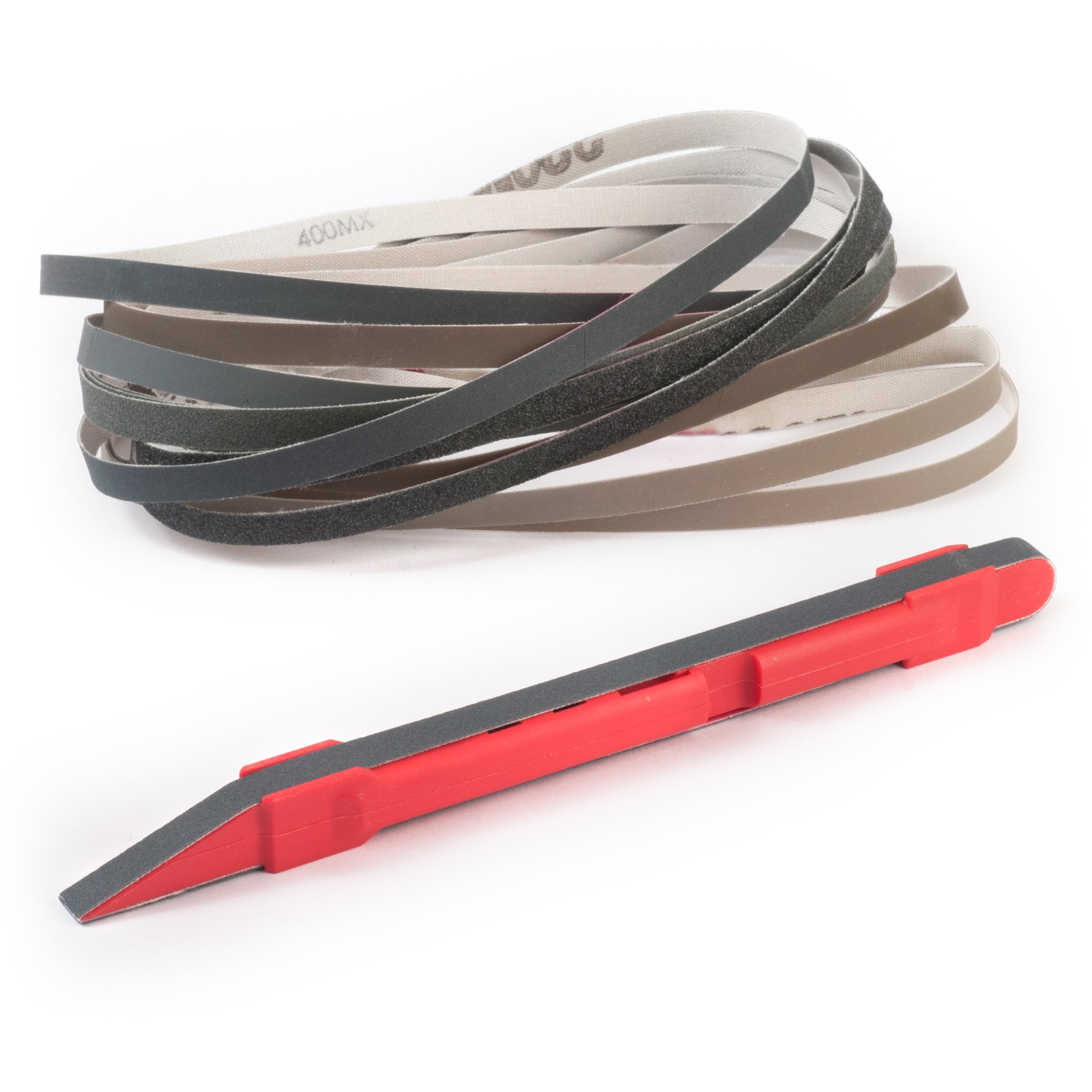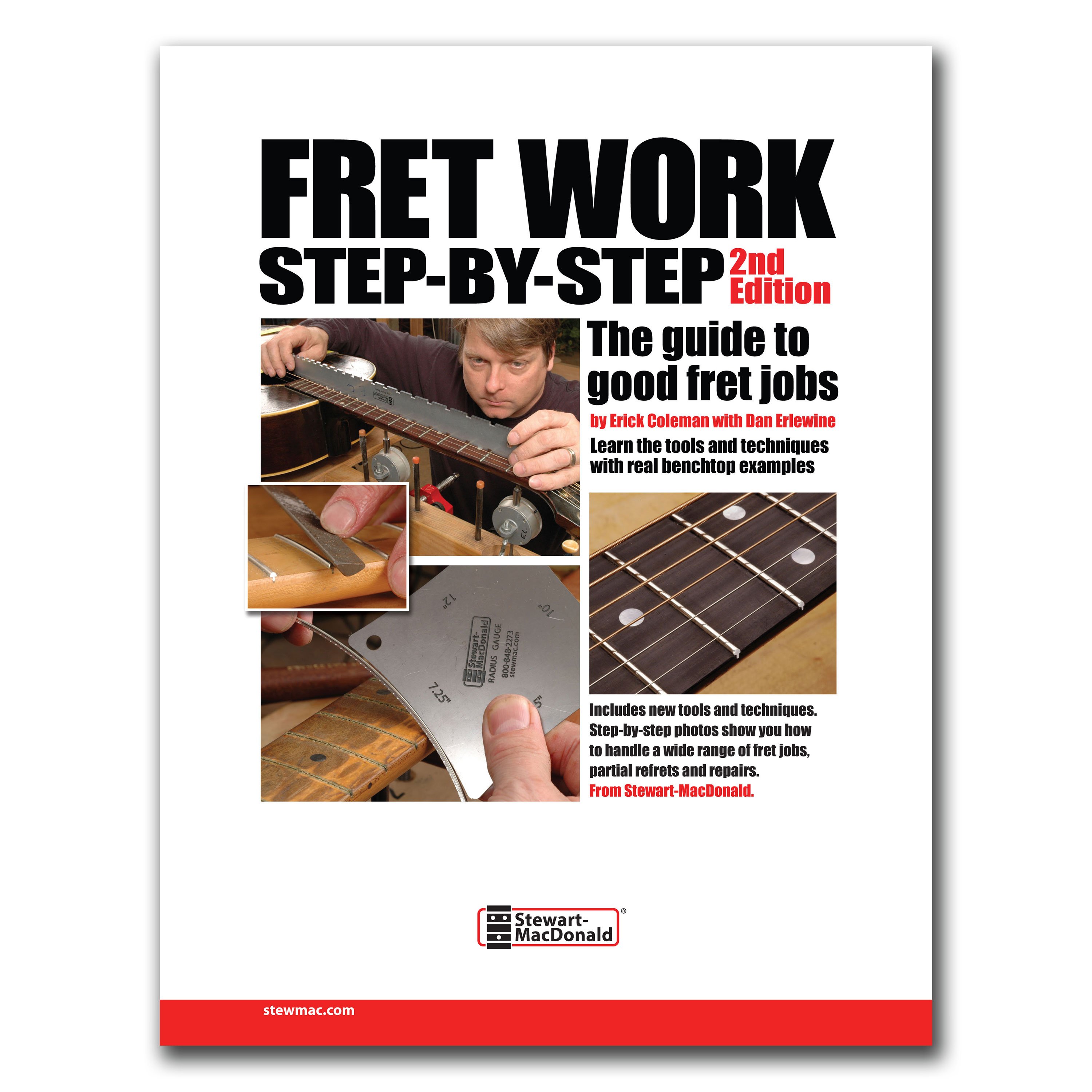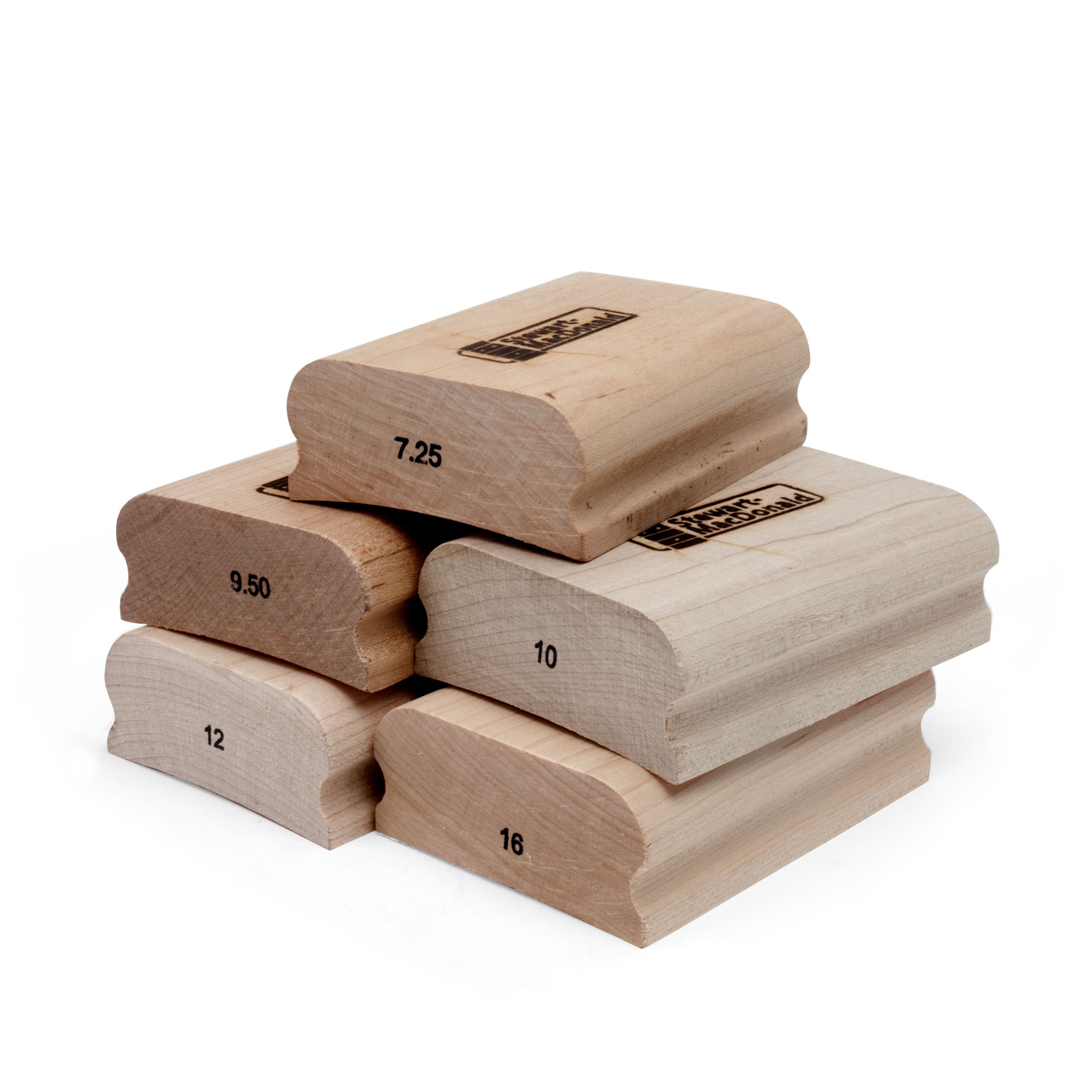Fixing fret buzz: spot leveling and re-crowning
Issue 232 December 18, 2014
Dan Erlewine found a 1935 May Bell and fell in love with her. She has some fret buzz due to worn frets that are flat and wide. Dan shows how a little leveling and filing got her playing again.
About the guitar in this video: This old May Bell guitar has a “mother of toilet seat” pickguard and fingerboard. This model was made by Regal in 1935 and distributed by Slingerland. In the case with it was a metal raised nut to be placed over the string nut, presumably for playing Hawaiian lap-steel style.
- How a worn fret can cause a buzz.
- Spot-leveling with a sanding block.
- Fret dressing with a 3-corner file.
- Dan’s tiny homemade “draw file.”
Video Transcription
[on screen text reads: Trade Secrets! - Stewart-MacDonald]
[Dan is playing his acoustic guitar]
Dan Erlewine: [on screen text reads: Spot leveling and re-crowning frets - Dan Erlewine Stewart MacDonald] I love this little guitar. I just got it, but it's got a few buzzes that I think are coming from flat fret tops and kind of scarred up frets. I don't even think there's very many tall frets, and a string can buzz on a flat fret. That's why you want to round them to the center and crown them. And I'm going to do that with a block of wood and some 320 grit sandpaper and my little Crowning File, and see if we can get rid of these buzzes. The problem really is the tops of the frets are flat and scratchy. You want the string to have a single point of contact in the center of the fret. These warm frets have wide flat tops. The contact point is off center, and the string buzzes against the flat part.
Spot leveling the frets
I'm going to level them a little with sandpaper to make sure none are sticking up high. I'll crown the sides of the frets with the triangle file to make them rounded again. With the sanding block, we've got the tops level with each other real quickly, and they all have a little flat on them now.
Re-crowning the frets
I'll round them off with a three cornered file. You want to tape off your fret board, or in this case, I'm using a StewMac Fingerboard Guard. And come on one side of the triangle, just till you touch the fret. You're holding it on an angle [on screen text reads: 3 Corner Fret Dressing File], and the motion is a forward stroke and rolling at the same time. You're rolling to center. And you want to go right up until there's the tiniest little ridge left.
And then you can use some sandpaper or a Sand Sick, and just polish it.
With a light leveling like this, it doesn't take very long to move right on down the fret board. When I get right down to that last little stripe of land, I like to turn the file on an angle and do what I call draw filing. It changes the cut of the teeth, and it acts almost like an eraser. In fact, a long time ago, I took one of the little files, and cut a chunk off, and epoxy it into this stick. I just cut a triangle groove in it, and this is my little miniature draw filer. You could make one of these in about a half an hour. And it's really good if we're polishing off that last little bit of scratch.
It's playing great. I don't hear the buzzes anymore. She's playing clean, old May Bell. I got this down at the Blue Eagle Music from my buddy Frank, and was down rooting around in his basement, found this and had to have it. And we did some horse trading. This was made by Regal in 1935, distributed by Slingerland. That's where the mother of toilet seat comes from. I love the sunburst, the body shape, the marquetry, the decal and the tone. She may be nine years older than me, but I love her anyway. And she has a heck of a body, don't you think?






